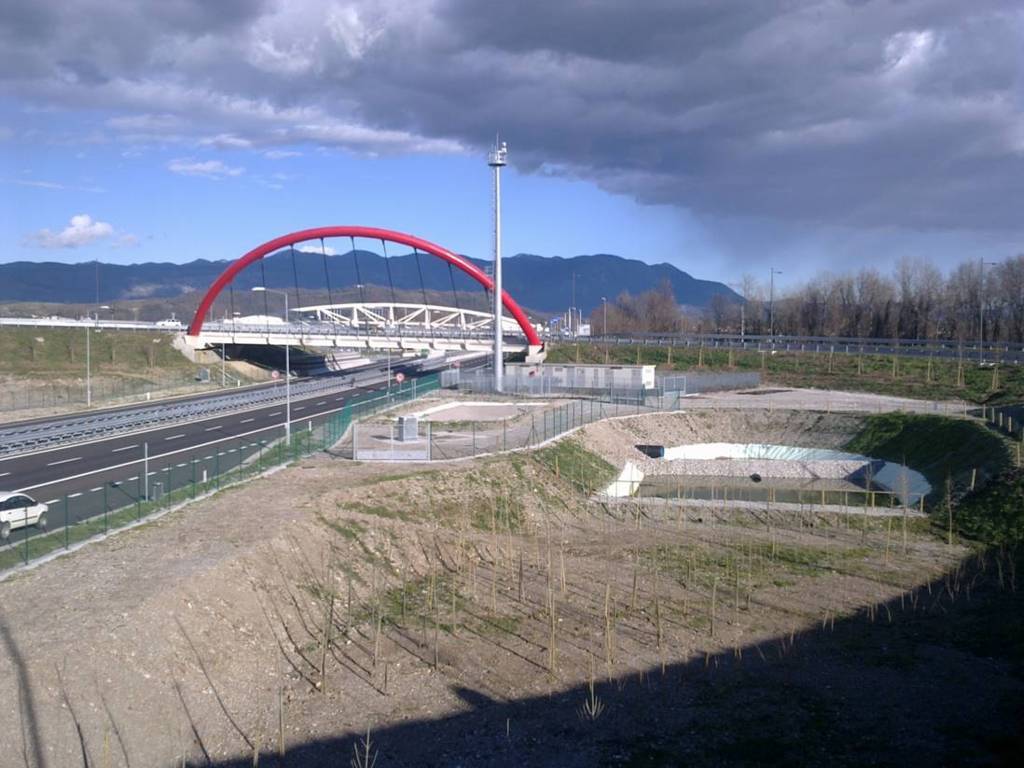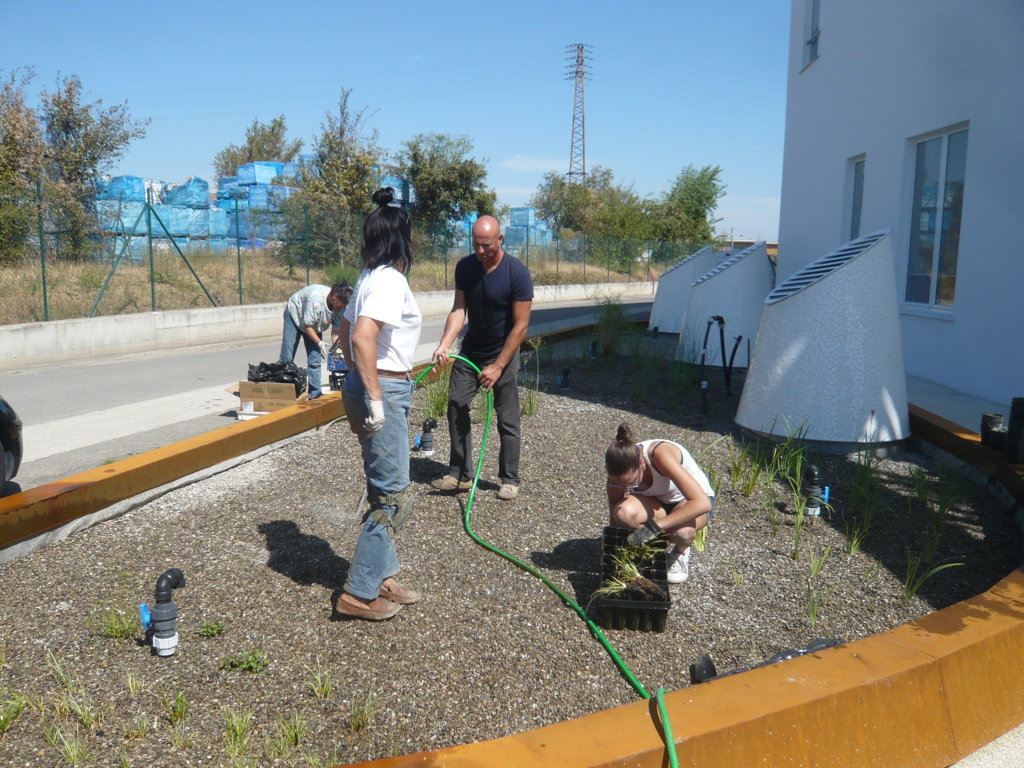Constructed Wetlands for stormwater first flush

First flush stormwater treatment - IRIDRA's solutions
Classical constructed wetlands
- Constructed wetlands with horizontal subsurface flow (HF)
- Constructed wetlands with vertical subsurface flow (VF)
- Constructed wetlands with free water surface (FWS)
- Hybrid constructed wetlands (HF + FWS, VF + FWS)
Intensified constructed wetlands (Constructed wetlands 2.0)
- Aerated constructed wetlands (FBA™)
Sustainable Drainage Systems(SuDS)
- Ponds
- Rain garden
- Bioretention systems
The problem of stormwater is often considered only from the "hydraulic" point of view, and not from the "depurative" point of view. Actually, runoff water coming from every kind of surface collect during its path some quantity of solid and organic materials that were deposited on the surface, bringing to the presence of significative concentrations of pollutants, often greater than the limit values imposed by existing laws.
By now, applications of constructed wetlands for the treatment of stormwater coming from runoff on impervious surfaces (urban areas, squares of industrial areas, highways, airports, etc) are very numerous at the international level and are often indicated as "Best Management Practices" in reducing diffuse pollution (NSW, 1998; Shutes et al., 1997 e 1999; EPA, 1999). Constructed wetlands used for treating stormwater are in general constituted of semi-natural free water surface systems, and more rarely with horizontal subsurface flow systems, with high hydraulic retention times due to the discontinuous alimentation related to the presence of rain events.
It is important to consider how the practice of treating stormwater, besides assuring protection of the environment from a heavy diffuse pollution, can bring remarkable advantages in term of sustainable management of water resource: water exiting the treating system, in fact, is often characterized by a level of quality that allows its reuse for less noble purposes, like for example washing water, cooling water, irrigation, storage for fire emergencies, etc.
IRIDRA's experience
IRIDRA has written for SPEA highway the guidelines for the environmental quality improvement of the portion of highway A14 Rimini-Pedaso, with a wide analysis on the mitigation of environmental impact driven by highway runoff.
IRIDRA has designed the solutions for the mitigation of the runoff impact from the new highway Villese-Gorizia in Veneto Region, proposing both off-line and inline solutions. The off-line treatments are done with a first flush tank, followed by horizontal flow constructed wetland, free water system, and detention and infiltration basin. The on-line treatments are done with horizontal and vertical flow constructed wetlands.

Areal view of realization phase of off-line treatment for runoff from the Villese-Gorizione highway, Veneto Region; designed by IRIDRA.

Villese-Gorizie highway, Veneto Region (Italy)
Chosen Nature-based solution: Off-line reatment: First flush tank + HF + FWS + Detention and infiltration basin On-line: HF/VF
Peculiarity: Multipurpose nature-based solution: environmental impact mitigation, landscaping improvement of highway. Designed by IRIDRA for Autovie Venete
Year of realization: 2015

Environmental education centre of Rispescia, Grosseto (GR - Italy)
Chosen Nature-based solution: HF + FWS
Peculiarity: Nature-based solution sited in an area of high naturalistic value (Maremma regional park)
Year of realization: 2001

Centro di ricerche Kerakoll research centre, Sassuolo (MO - Italy)
Chosen Nature-based solution: Rain garden
Peculiarity: Nature-based solution sited in proximity of a building of high landscaping value
Year of realization: 2012

Decentralised agricultural runoff treatment in the Sapanca lake watershed, KAMAG project (Turkey)
Chosen Nature-based solution: Sediment forbay + constructed wetland
Peculiarity: NBS realized under the umbrella of the KAMAG project
Year of realization: 2011

Residential area, Preganziol (TV - Italy)
Chosen Nature-based solution: Rain Garden
Year of realization: 2009

